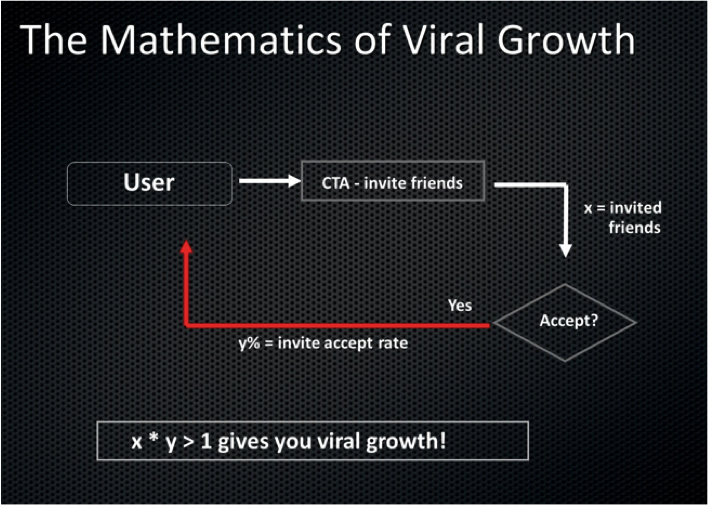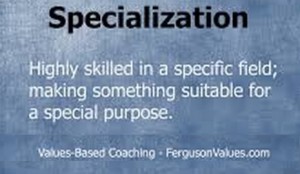The other day on my regular Hyderabad- Bangalore flight I was reading this book titled Raving Fans by Ken Blanchard and Sheldon Bowles. The concepts in the book brought back memories of my experiences in building hardware and software products in a 30 year career. I also often deliver skills and tools for building “aha” products through my corporate workshops. There is a lot written about design and design thinking. But, in this blog I am sharing a proven product development process that often results in winning products and raving fans. Do leave a comment if you agree or disagree.
“Satisfied customers”, isn’t that we all want? Sure, Yes, – but what does a ‘satisfied’ customer really mean? What if your customers are only satisfied because their expectations are too low? Or the competitors are doing worse than you. These satisfied customers will switch the moment they find a better alternative.
What if they really just marked ‘5-5-5-5’ on the satisfaction survey because they were in a good mood that day or they just wanted to get through the survey quickly? Does a ‘good satisfaction’ rating really tell us how connected to the product they are? How excited about the product they are? You may fill out a survey after buying a gadget or software or a service and represent a ‘satisfied’ customer – but are you going to race out and tell all of your friends that they MUST go to this product or the service too?
If you are a small business that really wants to grow rapidly, you really must create raving fans – not just satisfied customers. Raving fans are so excited about the product and their experience that they want to tell stories, recommend the product to others. These are the folks who line up around the block to get their hands on a new product FIRST! They post long, detailed reviews about products on blogs and sites. They become big ‘Influencers’ for various products of your business. Each raving fan may bring 4 to 10 other customers and can produce exponential growth for your business. On the flip side – dissatisfied or disenfranchised customers can take customers away!
So, how do you create raving fans?
Before we go further we must bust two myths that perpetuate tech community. These are:
More features = happier customers. How many of you try squeezing in as many features as you can? A product built to satisfy everybody will not satisfy anybody. Do not spread your resources thin over a broad product vision. Instead, narrow the scope, narrow the product vision. Then delight a customer narrow segment within this narrow vision. You can repeat this process with other customer segments over time. The other customer segments might wait based on what they hear about your product from other raving fans. Or they may be ready to switch when you release product for them. Be wary about adding features to your product.
Clever technology leads to better customer experience. A vision of a perfect customer experience is rarely fulfilled with technical innovation alone. A clever product will fail to delight customer if even one thing does not work the way it is supposed to.
Five steps to raving fans
I have distilled five best practices to create Raving Fans. These practices are pro-active – they start from product visioning and cover the entire product life-cycle. I believe that the work done upstream has enormous effect on the downstream activities!!!! These are –
- Develop a customer-centric vision
- Establish key metrics to measure customer delight
- Select a well-understood initial customer set to focus on
- Create a regular rhythm of engagement early on
- Structure customer feedback process for 3As
We now discuss these steps in detail.
Develop a customer-centric product vision
Product vision should be centered on the intersection of customer experience (through their eyes) and technological innovation – Not just how excellent a component or feature alone is! It’s also not just asking customers what they want or what their expectations are – it’s blending the two into this vision. Remember, customer experience is a function of their needs, values, views, attitudes. Model the feelings, emotions, behaviors to anticipate their reactions to your innovation.
Obviously, you can’t just ask customers what they want and build that – especially if you are building a never before innovation, things they never knew they wanted. But you can go observe them and listen to what they do not say. You can build customer empathy and feel their pain.
A common mistake every makes is – “I am the customer” or “I will put myself in my customer’s shoes”. With this approach only one guy has been successful – Steve Jobs. You aren’t Jobs, atleast yet. You are also not the typical end user of your product or service for a number of reasons – your values are different, your technical background knowledge is different, your attitude is different, your cultural context is different, your perception and knowledge of the tasks, problems, and scenarios is incomplete or skewed. For the same reason, your colleague or your VP is also not the customer.
In summary, you must drive your innovations from a customer perspective and ensure your business model and technology enhancements fit the vision of the customer’s great experience.
Establish key metrics to measure customer delight
Vision by itself is not enough.
Backup the vision with key metrics and customer-focused release criteria to measure if you are meeting and indeed exceeding your customer requirements and expectations. You must know this at every stage of the product development i.e., much before the product is shipped. Remember, customer perception of quality is very different from engineering quality that most tech entrepreneurs tend to focus on. If product does what the customer needs and is emotionally engaging, it’s high quality.
A good set of release criteria will include measures of functionality, experience and performance. These criteria must be benchmarked against best in class products and be traceable to the customer requirements. This means you will measure – does the functionality of the product meet the bar? does the user experience meet the bar? And does the product performance meet the bar?
You would also want to ensure coordination and buy-in across disciplines i.e., marketing, product planning, UX etc. You do this by involving all other disciplines from product visioning stage itself.
Select a well-understood initial customer set to focus on
It is very important to identify a set of customers you will depend on for product feedback apart. It is naïve to depend on only the common channels like loudly complaining customers, press reviewers and product support teams. These are often incomplete, insufficient, or inaccurate sources of user data. Consciously, methodically, methodologically create a model of the “end user” and gather data. Identify a right pool of customers for research, studies and early adoption programs. Customer Advisory Council (CAC), User Group (UG), Special Interest Group (SIG) serves such purposes. For example, CAC is a small, hand-selected group of customers that are willing to provide intimate customer feedback on product/service strategy and design issues. UGs and SIGs are volunteer driven groups whose members are most likely not affiliated with any specific company. They meet on a regular basis to discuss and share information on a variety of topics and can range in size from 5 to 1000+ members. The members of these groups are influencers and a direct and focused interaction with them can generate grass-root level feedback to improve your offerings.
Create a regular rhythm of engagement early on
If you involve customers early and often – and close the loop with them – then they feel you are actually taking action on their feedback. They feel that they have a stake in the development process – and that builds loyalty and trust. They feel a sense of relationship with the company that extends beyond the product. This sense generates feelings like –
“They really listened to me!” “I can’t wait to see what they do for me next.”
“I can connect with a community of people who care about the same things I do.”
Use a variety of tools for different phases of product development. For example –
- Product planning phase – surveys, focus groups, customer visits
- Product design phase – field trials, usability studies
- Product stabilization – alpha and beta releases
- Post release – customer councils, newsgroups, blogs, automated tools
Publish your blog atleast twice a weak. Talk about what is happening at your company or in your product. Interact with the customers who reply to your blogs
Structure customer feedback process for 3As
Customer feedback will come in from multiple sources and at multiple levels. All this feedback must be captured, analyzed, categorized and prioritized. You must make this feedback accessible and actionable. Some of the feedback will result in customer requirements and product features.
Therefore, you must build a central feedback repository where the feedback can be easily be found and have a process to convert feedback into requirements that are traceable. That means someone is accountable for the requirement.
The feedback should be characterized by three top 3 A’s: Accessible, Actionable and Accountable.
Key challenges
Finally, this article still leaves you with some challenging questions. Share your answers to the questions given below. If you look for deep dive please do not hesitate to contact the author!
Starting a new sprint or a milestone? How do you find and use customer data already collected before? Where do you go to get new customer data? How do we ensure you aren’t asking the same customer for the same feedback multiple times?
How do you validate vision, plans, designs, etc. – how do you select right people for feedback at different stage of the product development? What if you need quick customer feedback to inform a decision?
Should you entertain significant design change requests after the Beta?
What are the metrics of customer expectations that you must measure throughout development?
What are the chances that your product will meet customer expectations prior to release?
 Hence, our principle is simple – “Let people come in for the utility. Present it in the simplest manner. And let them discover the power of a humane touch”.
Hence, our principle is simple – “Let people come in for the utility. Present it in the simplest manner. And let them discover the power of a humane touch”. 


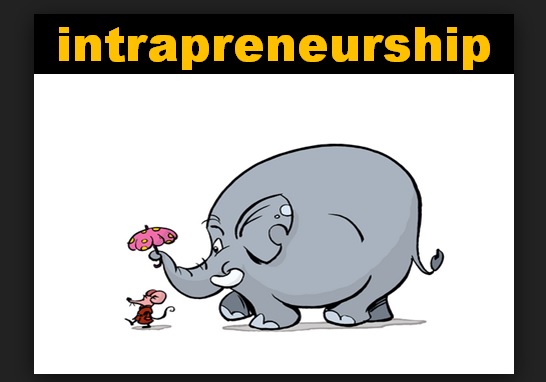



 As the dog fight continues to grab market share, e-commerce players are trying to outdo one another by introducing newer business models and innovations; the latest being Mobile Only format. Though there have been many successful experiments that defined the online buying culture in India such as Cash on Delivery, easy hassle free returns and EMIs, the latest experiment’s success is not pronounced yet, while many of the digital enthusiasts are upbeat about it.
As the dog fight continues to grab market share, e-commerce players are trying to outdo one another by introducing newer business models and innovations; the latest being Mobile Only format. Though there have been many successful experiments that defined the online buying culture in India such as Cash on Delivery, easy hassle free returns and EMIs, the latest experiment’s success is not pronounced yet, while many of the digital enthusiasts are upbeat about it.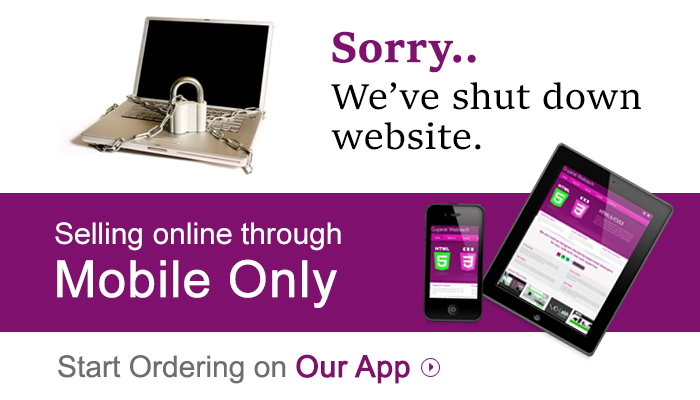 Here comes the Mobile Only strategy! While all the arguments for Mobile Only strategy evangelize the potential of the native app technology and innumerable values it promises to the marketer, an honest assessment of the anticipated compromises on the side of the customer is yet to come i.e what possibilities it takes away from the customer in order to cut short longer sales cycle. Ironically, the deterrents for marketers to sell more are also the very value drivers for the consumers to buy more!
Here comes the Mobile Only strategy! While all the arguments for Mobile Only strategy evangelize the potential of the native app technology and innumerable values it promises to the marketer, an honest assessment of the anticipated compromises on the side of the customer is yet to come i.e what possibilities it takes away from the customer in order to cut short longer sales cycle. Ironically, the deterrents for marketers to sell more are also the very value drivers for the consumers to buy more!
 Design to delight: Instead of Mobile only format, to fully capitalize rapidly growing net users the e-commerce players should repurpose all the touch points rather than limiting to only mobile touch points. Marketers should offer all options of net access points including web along with mobile, with all screen options and continuously reexamine the new touch points of value creation.
Design to delight: Instead of Mobile only format, to fully capitalize rapidly growing net users the e-commerce players should repurpose all the touch points rather than limiting to only mobile touch points. Marketers should offer all options of net access points including web along with mobile, with all screen options and continuously reexamine the new touch points of value creation.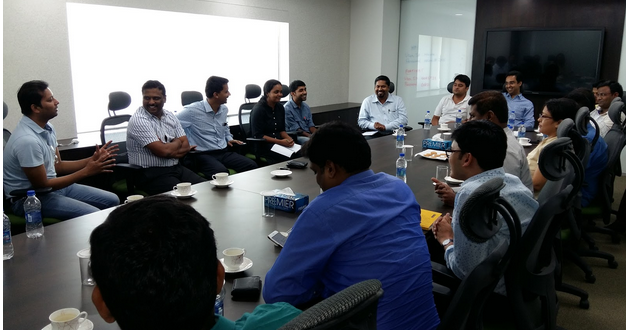
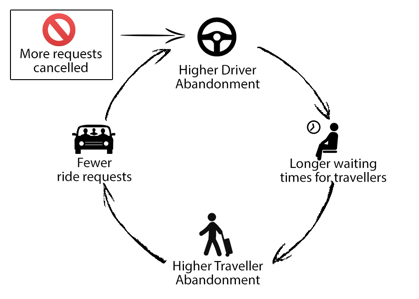 If you’re building the Uber for X, you need to ensure that you’re tracking a metric that helps you determine the degree of interaction failure on your platform. Freelancers that don’t get business within X days, requests that don’t get satisfied within Y minutes, may all be indicative of interaction failure. The exact measure of interaction failure will vary by platform and the importance of tracking interaction failure will, in turn, depend on the multihoming costs.
If you’re building the Uber for X, you need to ensure that you’re tracking a metric that helps you determine the degree of interaction failure on your platform. Freelancers that don’t get business within X days, requests that don’t get satisfied within Y minutes, may all be indicative of interaction failure. The exact measure of interaction failure will vary by platform and the importance of tracking interaction failure will, in turn, depend on the multihoming costs.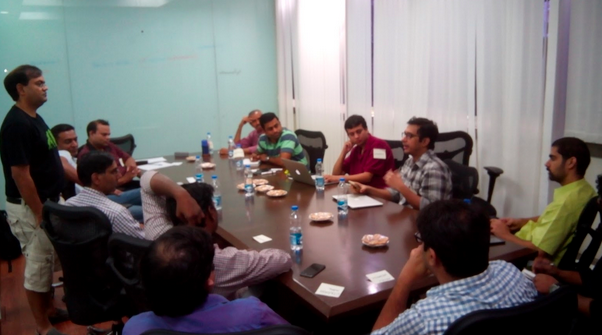
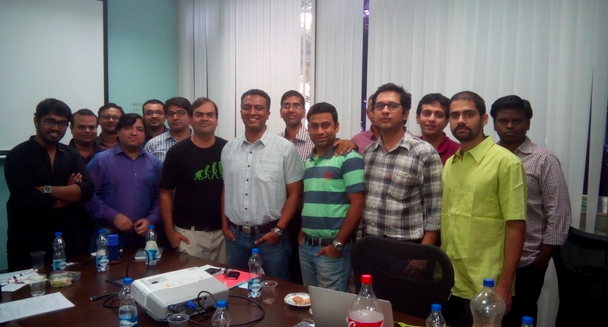
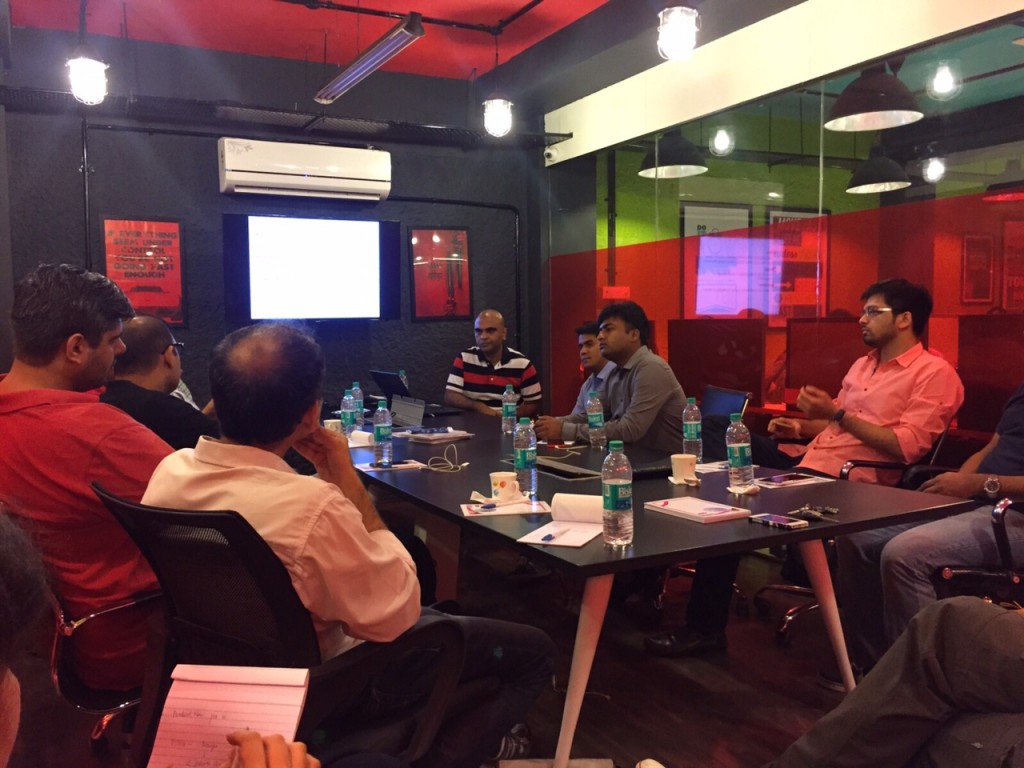 “A great product manager has the brain of an engineer, the heart of a designer, and the speech of a diplomat”
“A great product manager has the brain of an engineer, the heart of a designer, and the speech of a diplomat”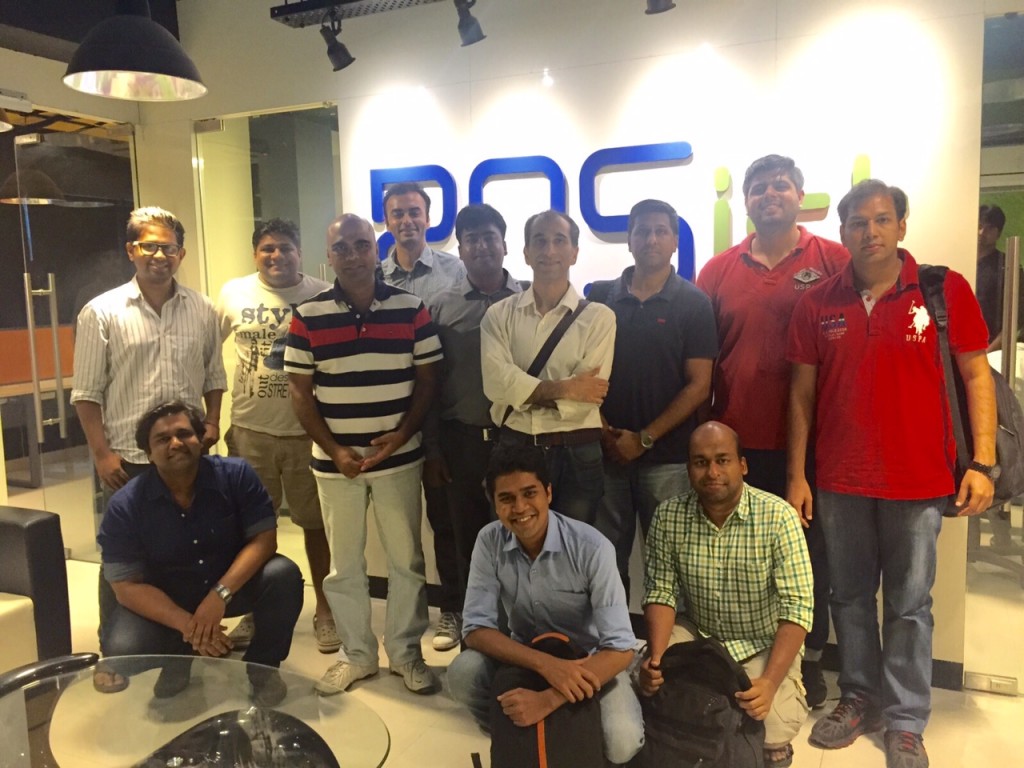 Amit emphasised the importance of tracking the product’s viral coefficient which is the number of additional members every new member brings. It should be greater than 1 for the product to become viral.
Amit emphasised the importance of tracking the product’s viral coefficient which is the number of additional members every new member brings. It should be greater than 1 for the product to become viral.